#alice hardy icons
Text

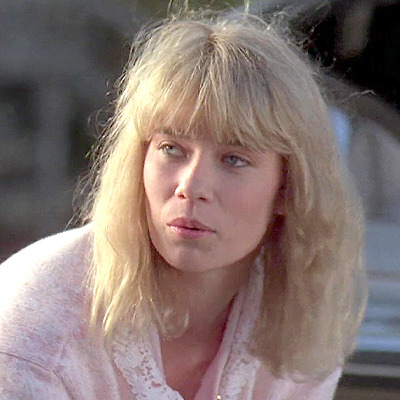
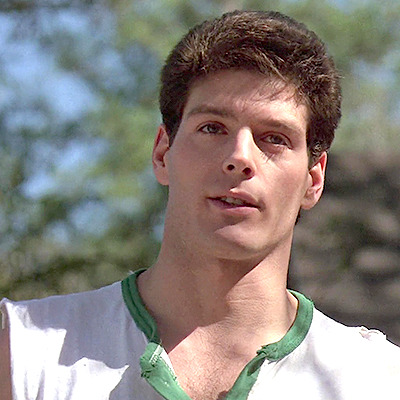

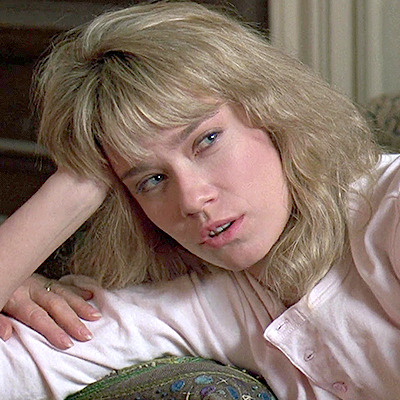







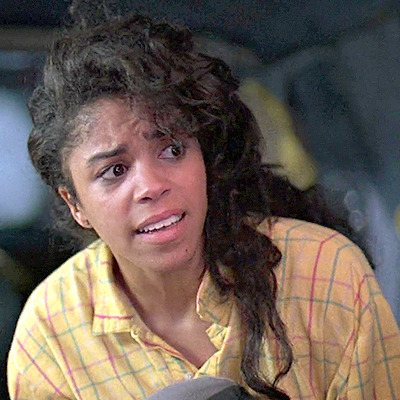




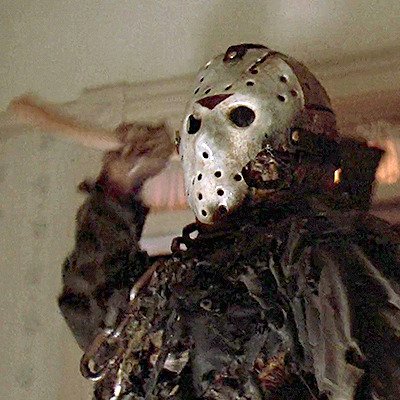
Friday the 13th Part VII: The New Blood, 1988
#halloween#halloween icons#halloween edits#friday the 13th icons#marcie cunningham icons#alice hardy icons#pamela voorhees icons#tw blood#tw gore#friday the 13th#jason#jason voorhees#jason icons#jason voorhees icons#icons#horror movies#icons halloween#spooky season#spooky#trick or treat#horror movies icons#twitter icons#horror#halloween special#icons jason voorhees#icons friday the 13th#icons with psd#psd icons
25 notes
·
View notes
Text



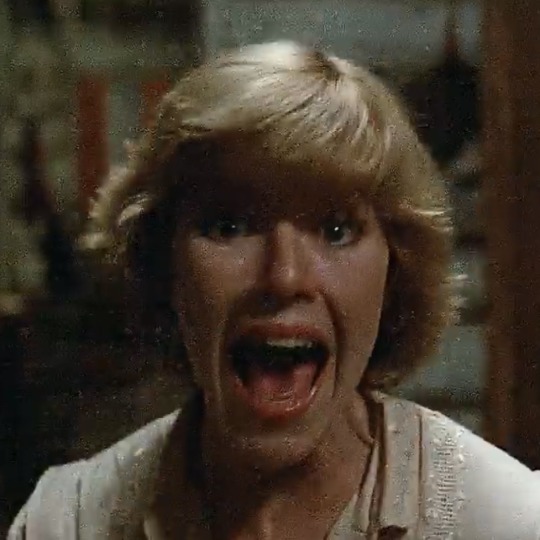


friday the 13th icons 🪓🛶🏕
like if you save
#icons#no psd icons#film icons#horror icons#friday the 13th icons#halloween icons#marcie cunningham icons#alice hardy icons#pamela voorhees icons
14 notes
·
View notes
Text


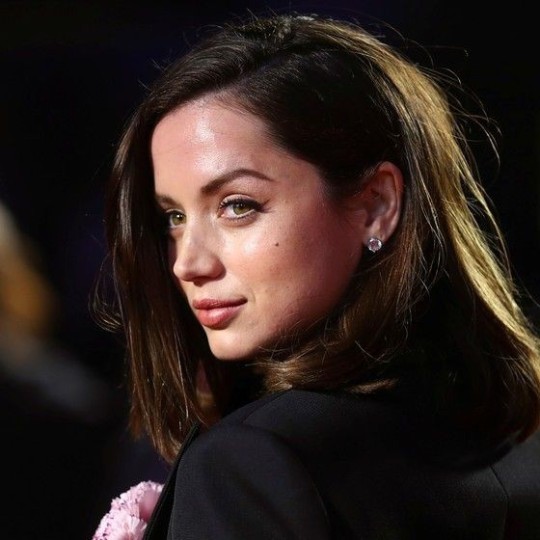



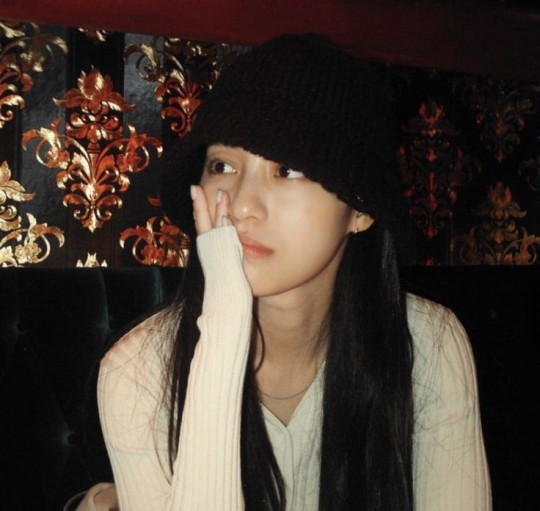
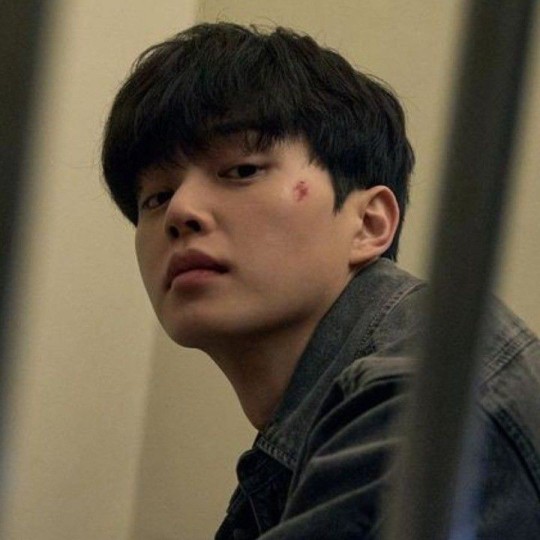

#lee dong wook#lee dong wook icons#alice pagani#alice pagani icons#ana de armas#ana de armas icons#moon ga young#moon ga young icons#kang min ah#kang min ah icons#alexa demie#alexa demie icons#tom hardy#tom hardy icons#song kang#song kang icons#jungkook#jungkook icons#icons#aesthetic#icons aesthetic#aesthetic icons#aesthetic girls icons#boys aesthetic icons
147 notes
·
View notes
Text


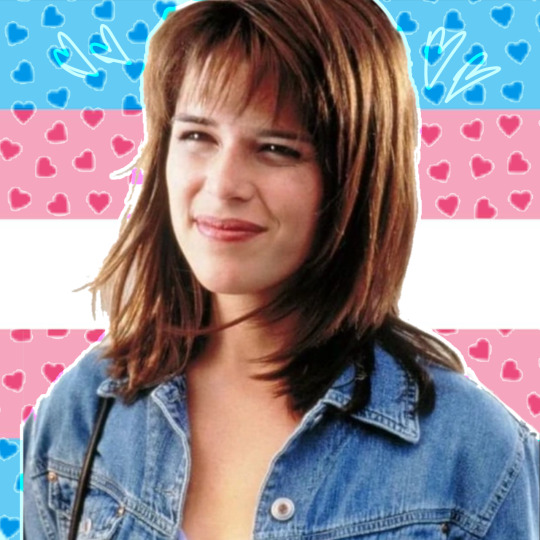
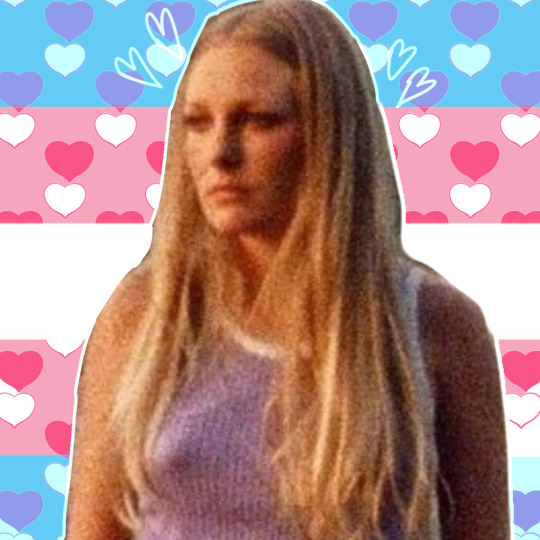
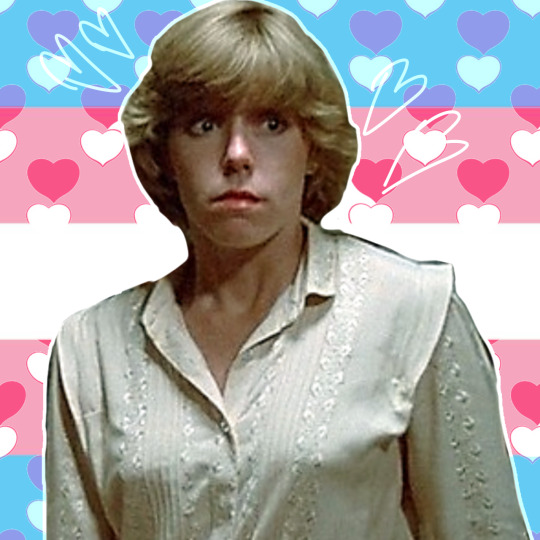
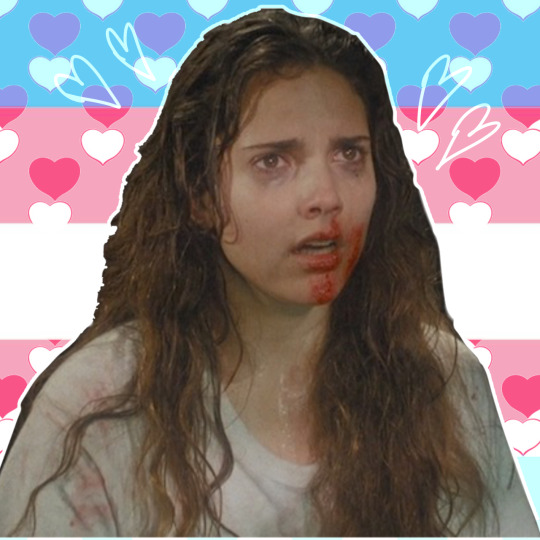

More trans final girl icons (aka I got a little to carried away and made a few extra than I needed) give me credit if you use any of these as I made the transparents png myself!!
Dni if you don’t allow minors on your blog ,pr0shipper or 18 plu blog
#please refrain from sending me asks about the dni if 18 plus blog thing I will not change my mind#horror#hellraiser#Kristy cotton#jess bradford#black christmas#Alice hardy#friday the 13th#ellen ripley#alien#Julie James#i know what you did last summer#sidney prescott#scream#texas chainsaw massacre#sally hardesty#trans#trans pride#horror icons#my edits 🎃
23 notes
·
View notes
Text
1980s Horror Film Character Names
I totally forgot I’d started making this last year! I think I never posted it because I wanted to find more names, but there’s already a decent amount and I don’t feel like being that tedious about names right now lol.
It’s first & last names (separated for mix & match potential) of characters from iconic late 1970s & 1980s horror movies. I think I started looking for cheesier B-movies to pull from, but yeah it’s been a whole year so I forget.
First Names
Alice
Allen
Allison
Ally
Amy
Angela
Annie
Arnie
Artie
Axel
Barry
Bill
Billy
Bobby
Brady
Brenda
Brent
Brett
Brooke
Buddy
Burt
Buzz
Carol Anne
Carter
Casey
Charley
Charlie
Chili
Christine
Chuck
Cindy
Courtney
Craig
Cynthia
Dana
Darcy
Debbie
Demi
Dennis
Diane
Donna
Doug
Doyle
Duane
Elaine
Ellie
Emma
Ernie
Ferdy
Foster
Gary
Gene
George
Gerald
Ginny
Glen
Hal
Hank
Helen
Jack
Jackie
Jake
Jason
Jeff
Jennifer
Jerry
Jesse
Jimmy
Joanne
Jodi
Joe
Joey
John
Johnny
Judd
Judy
Kate
Katherine
Kathy
Katie
Kelly
Ken
Kenny
Kim
Kimberly
Kristen
Larry
Laurie
Lea
Leigh
Lenny
Leroy
Linda
Lisa
Liz
Lynn
Marci
Marcia
Marcie
Mark
Mary Lou
Masen
Max
Meg
Megan
Mel
Melissa
Mike
Molly
Monica
Nancy
Ned
Neil
Nick
Nicki
Nikki
Patti
Patty
Paul
Paula
Peter
Phoebe
Polly
Rachel
Ralph
Reilly
Rennie
Richie
Rick
Ricky
Rob
Rod
Roland
Ronnie
Roy
Ruby
Rudolf
Rudy
Russ
Sally
Sandy
Sara
Sarah
Shane
Sharon
Sheila
Shelly
Sissy
Steve
Steven
Susie
Suzie
Tad
Taryn
Teddy
Terri
Tina
Toby
Tom Jesse
Tommy
Tracy
Trish
Valerie
Vic
Vickie
Vicky
Warren
Wendy
Wes
Will
Last Names
Andrews
Angelo
Badger
Baker
Barnes
Barrington
Bates
Baxter
Beringer
Brand
Brewster
Bringsley
Brown
Burke
Burns
Cabot
Camber
Carrington
Cassidy
Caulfield
Challis
Clarke
Cole
Cologne
Corben
Corvino
Costic
Crusel
Cunningham
Daigler
Dandrige
Daniels
Darnell
Darrinco
Deagle
Dier
Doyle
Duke
Dumpkin
Duncan
Essmont
Evans
Field
Franklin
Freeling
Frye
Futterman
Garris
Garth
Geiger
Graham
Gray
Grimbridge
Guilder
Halavex
Hammond
Hanniger
Hardy
Harper
Hawes
Holland
Hopkins
Jachson
Jarvis
Jessup
Junkins
Kemp
Kessler
Kincaid
Kopecky
Kupfer
Lane
Lantz
LeBay
Lynch
Lynn
Macauley
Maloney
McBride
McFadden
McGregor
McNichol
Meeker
Meisel
Mercer
Morgan
Mott
Nagle
Nessler
Newby
Palmer
Parker
Parks
Parsley
Pataki
Peltzer
Penmark
Perry
Pervier
Powers
Priswell
Repperton
Richards
Shote
Spool
Stanton
Stark
Statler
Stavinski
Steele
Stevens
Strauber
Strode
Sykes
Taylor
Thomas
Thompson
Thorn
Toomey
Trenton
Vanders
Venable
Walsh
Warner
Weatherall
Webber
White
80 notes
·
View notes
Note
Rearranging my bookshelves at the moment in chronological order. One thing I noticed is that after Austen... English literature kinda fizzled out. At least until the early 1890s when a whole pile of writers emerge all at once (Wilde, Yeats, Shaw, Stevenson, Conrad, Doyle, Hardy, H. G. Welles, and more; and almost immediately they're followed by a tidal wave of modernists). Whereas for seventy years, aside from the three big poets you're covering plus Alice In Wonderland, it's just Dickens, Eliot, and the Brontes!
Now, admittedly the 'just' is doing some heavy lifting — but so are those novelists, in carrying Shakespeare's language over a seventy-ish year period! And in terms of variety, they feel like both a less *diverse* ('sprawling 18C three-deckers' describes accurately, if dismissively, most of those novels) and, more controversially, a less *fruitful* crop than the bursting quarter-century from Blake's first illuminated manuscripts to Austen's death.
Now you did discuss the 'cultural studies' aspect of the Victorian era, which was very enlightening — but at the same time, Russian, French, and American literature each undergo what are almost certainly their greatest periods! Which makes sense to me considering the *imaginative* ferment I'd expect to be cause by the political and industrial revolutions of the entire period... like, those three countries didn't reduce to cultural studies!
So, three questions: 1) Who am I missing over that stretch from Austen's death to, let's say, Dorian Gray? 2) Do you think this reading is correct, or am I weighting things wrongly, either being too dismissive of the writers named, or giving too much credit to the writers at either end of the century? 3) What, if you can answer something so broad, was different in France, America and Russia?
(Sorry to set you a three-part essay question on a Wednesday night lmao, really I'm just fishing for any interesting thoughts you might have)
If I were to dispute your claim, I would do so in two ways: 1. I'd say that Dickens is so enormous, so much the iconic and canonical English novelist, the one who stands next to Shakespeare, that he carries the whole period; and 2. I'd say (and have already said in The Invisible College) that the Victorian Sage writers like Carlyle, Ruskin, and Arnold have the weight and intensity of the prior Romantic poets and subsequent modernists.
If someone else were to dispute your claim, someone else might say that there are a lot of great novelists in the mid-Victorian period, like Trollope, Thackeray, Mrs. Gaskell, and Wilkie Collins. Someone else might say this, but I could never get interested in those writers, and I doubt anyone thinks they're the equal of Balzac, Melville, or Tolstoy—or of Dickens. On the other hand, we now take the Brontës far more seriously than people once did—I would put them essentially on the same level as Austen and Dickens—so fashions in these things are always changing.
So I essentially agree with you that, except for the writers you name, especially Dickens and Eliot, it's a fairly flat period. I suspect the reasons are the ones the modernists would have offered, despite their sometimes exaggerated animus against the Victorians: the sentimentalism, the censoriousness, the middle-class piety, the imperial self-regard, the padded serials, and all the rest of it.
I've quoted on here before Seamus Deane's slightly offensive view of the matter in his Celtic Revivals, coming from Marxist postcolonial theory (and as I've also said before, this is particularly unfair to George Eliot, who, I must emphasize, translated Spinoza):
It is, I believe, easier to understand Joyce’s achievement in this respect by looking to the Continental tradition of the novel. There the theme of intellectual vocation was much more deeply rooted and was treated with a subtlety quite foreign to the evangelical, female puritan spirit which so dominated the sentimental English novel. Perhaps Middlemarch more than any other single work shows how the innate provincialism of the English novel deprived it of a consciousness of itself as a part of a greater European culture. This is something conspicuously present in the French and, even more, in the Russian novel of the nineteenth century. One could not imagine Crime and Punishment or Le Rouge et le Noir without the idea of Europe, especially Christian Europe, as a living force in them, in their traditions, and in the minds of their creators. But Emma and Great Expectations and Middlemarch survive happily, and more modestly, apart from that idea. Not until an American, Henry James, arrived on the scene was the novel in English Europeanized, and the Irishman Joyce countered this achievement by anglicizing the European novel.
So that "puritan" and "provincial" spirit explains the disparity between the English on the one hand and the Russians and French on the other, who were simply writing in different social circumstances for an audience presumed to contain fewer young ladies in need of moral protection. One might add the English empirical bias against big ideas, which authors as different as Blake and Eliot would so strongly protest.
In Love and Death in the American Novel, Leslie Fiedler says the European novelists held together an audience that consisted of common readers, mostly female, on the one hand, and highbrow intellectuals, mostly male, on the other. The Anglo novelist, by contrast, somehow let this audience fragment early on and had to address either one set of readers or the other.
The American case is particularly instructive: Hawthorne and Melville were neglected in their time, relegated to the margin by popular novels written in "the evangelical, female puritan spirit," of which Uncle Tom's Cabin is the most famous—but we just don't read these books! We read The Scarlet Letter and Moby-Dick instead of The Lamplighter or The Wide, Wide World. It's as if the English Victorian canon had been reduced to Sartor Resartus and Wuthering Heights. This causes the historicist critic to despair, and obviously a certain type of feminist critic too, who especially resents Hawthorne's line about "the damned mob of scribbling women," but what we can we do? We're interested in what we're interested in. And as I said in one of the IC episodes, it's not as if the great female writers of the 20th century wanted to follow in Stowe's footsteps either, since the puritan and provincial spirit was a much a prison for female authors in the 19th century as it was their place (their only permissible place) of articulation.
2 notes
·
View notes
Text
My Adventures With Superman Season One Spoiler-Filled Review [Part 2]
Continued from part 1
The voice cast is talented. Jack Quaid lent his voice to Peter Parker / Lizard in Spider-Man: Across the Spider-Verse and more prominently as Ensign Bradward "Brad" Boimler in Star Trek: Lower Decks. This series marks one of Alice Lee's first voice roles, apart from voicing a character in Mickey Mouse Funhouse. She has played characters in TV series since 2009. Ishmel Sahid has been working on similar series since around the same time. In an exclusive interview with Lee and Sahid, both said they were excited to see fanart, but also said it was challenging to maintain the high energy of Lois and Jimmy. Both noted the writers and producers helped them. They described how they had to adjust their speaking voices to the characters and explained the flair they gave each character through the voices.
One member of the voice cast, Kari Wahlgren, is well-known. She voiced Martha Kent, and young Clark Kent, in this series. She has done dubbing of anime characters since 2002, and has voiced iconic characters in Western animation. This includes Electronique in Kim Possible, Suzy Johnson in Phineas and Ferb, Tigress/Sheena in Carmen Sandiego, Callie in the somewhat underrated Cleopatra in Space, and Zatanna in DC Super Hero Girls. She also lent her voice to characters in Sym-Bionic Titan, Young Justice, Infinity Train, Dota: Dragon's Blood, The Ghost and Molly McGee, The Owl House, Velma, and OK K.O.! Let's Be Heroes.
Wahlgren is voice actor powerhouse in her own right. There are few voice actors, in the cast, who have voiced as many characters as Wahlgren. One exception is Zehra Fazal. She is recognized for voicing Nadia Rizavi in Voltron: Legendary Defender and Halo/Violet in Young Justice. She also voiced Faraday and Shannon in Craig of the Creek, Mara in She-Ra and the Princesses of Power, Zahra and Sabrina in Glitch Techs, General Yunan in Amphibia, and Tassia in Dragon Age: Absolution.
Reprinted from Pop Culture Maniacs and Wayback Machine. This was the forty-ninth article I wrote for Pop Culture Maniacs. This post was originally published on September 21, 2023.
Others have voiced just as many characters. Chris Parnell voiced characters in Gravity Falls, BoJack Horseman, Elena of Avalor (Migs), Samurai Jack, and Dogs in Space (Ed). Debra Wilson previously voiced characters in Cannon Busters (Lady Day), Final Space (Quinn's mother), The Casagrandes, The Owl House, Star Trek: Prodigy, Black Dynamite, and The Proud Family. Catherine Taber voiced her share of animated characters including Padmé Amidala in Star Wars: The Clone Wars and Lori Loud in The Loud House. Lucas Grabeel voiced characters such as Jiku in Elena of Avalor and the haughty scammer Julian in Spirit Riding Free.
youtube
The voice cast includes other prominent voice actors. Vincent Tong voiced characters in 16 Hudson, Ninjago, LoliRock (Mephisto), My Little Pony: Friendship is Magic, Polly Pocket, and The Dragon Prince (Prince Kasef). André Sogliuzzo voiced King Bumi in Avatar: The Last Airbender and King Verago in Elena of Avalor. He also voiced characters in Samurai Jack, Star Wars Rebels, and The Owl House. Darrell Brown previously lent his voice to characters in Gabby's Dollhouse and Madagascar: A Little Wild. Azuri Hardy-Jones voiced Jade in Deer Squad. Kenna Ramsey voiced various characters in video games.
Apt viewers may recognize Jake Green, Laila Berzins, Jesse Inocalla, David Errigo Jr., Max Mittleman, and Andromeda Dunker. Errigo Jr. is known for voicing Ferb in the 2020 film, Candace Against the Universe. The film is the most recent iteration of the Phineas and Ferb franchise. Inocalla voiced Soren in The Dragon Prince. Berzins voiced characters in indie animations such as Satina, Wild Card: Shuffled, and Monkey Wrench.
Other well-known individuals voice bit characters in the seventh episode: Kimberly Brooks as Jalana Olsen, Osric Chau as Lewis Lane, and Lauren Tom as Leader Lois. Brooks is best-known as Princess Allura in Voltron: Legendary Defender and the rough-and-tough Jasper in Steven Universe. Some may remember Chau as the one who voiced the villainous computer hacker known as The Troll in Carmen Sandiego. Tom voiced Mop Girl in recently ended a mature animation, Disenchantment, and Amy Wong in currently airing Futurama, another mature animation. This differs with actors such as Reid Scott, Joel De La Fuente, Melanie Minichino, and Michael Emerson (as Brainac). All four do wonderful voice work on this show, but have almost exclusively, or exclusively, previously done live-action TV series.
Warner Bros. Animation is a subsidiary of the Warner Bros. Discovery conglomerate. This subsidiary produced Velma, Harley Quinn, DC Super Hero Girls, Young Justice, Justice League Unlimited, Teen Titans, Justice League, Static Shock, Superman: The Animated Series, and Batman: The Animated Series. Rooster Teeth, another subsidiary, is recognized for RWBY, its flagship series. The CRWBY is doing all they can to ensure RWBY gets a tenth season. The RWBY superhero crossover film (part 2) is coming out this fall. It may include a version of Superman, like part one.
A largely-circulated spreadsheet in which people anonymously described their conditions in animation studios mentions Warner Bros. Animation. In one entry, Warner Bros. Animation is said to have too much work and treat workers badly. However, it acknowledges that each production is different. People on Glassdoor praised Studio Mir for high-quality projects and talented colleagues. Others were more critical.
Whatever the second season of My Adventures with Superman brings, the number of fans will continue to grow (including the 10,000+ fans across two subreddits), regardless of the corporate decision to air it on Adult Swim rather than Cartoon Network, possibly because of "dark moments" in the series. Hopefully the next season goes above and beyond what the first season delivered. Even so, I can't rate this series high enough, as it is just as strong as Harley Quinn and superior in many ways to the sometimes-convoluted Young Justice and mediocre Velma.
My Adventures with Superman can be streamed on Max or Spectrum. It can also be purchased on Prime Video, either as an entire season or individual episodes, iTunes, Vudu, Google Play, or Microsoft Store.

© 2023 Burkely Hermann. All rights reserved.
#my adventures with superman#jack quaid#lower decks#kari wahlgren#zehra fazal#chris parnell#debra wilson#catherine taber#lucas grabeel#subreddit#reddit#reviews#voice acting#max#spectrum#hbo max#rwby#warner bros discovery#conglomerates
3 notes
·
View notes
Note
top 5 agatha christies and top 10 quotes from books/tv shows/films/etc that live rent-free in your brain :)
hi Arwen!!
top 5 agatha christies (love this question btw!!):
And Then There Were None - i keep meaning to watch the tv series but haven't gotten around to it yet...
Murder on the Orient Express
The Seven Dials Mystery
They Do It With Mirrors
Appointment With Death
honorable mention to Why Didn't They Ask Evans? just because the tv show was brilliant!
top 10 quotes that live in my brain rent-free:
"Why you stuck-up, half-witted, scruffy-looking nerfherder!" - the one & only leia organa, the empire strikes back
"There is a giant wasp! I mean a wasp, that's GIANT! And when I say giant, I don't mean big, I mean FLIPPING ENORMOUS!!" - ALL HAIL OUR QUEEN DONNA NOBLE, literally every time I say this line to myself I do her head bobble too lol. absolutely iconic of miss tate
"900 years of time and space, and I've never met anybody who wasn't important" - eleventh doctor
"If I loved you less, I might be able to talk about it more" - Emma (this quote makes me absolutely INSANE)
"No matter how I go, I want it reported that I drowned in the moonlight, strangled by my own bra" - Carrie Fisher, The Princess Diarist
"I wish I were a girl again, half savage, and hardy, and free..." - Wuthering Heights
“Oh, you can't help that,” said the Cat: “we're all mad here. I'm mad. You're mad.” - Alice in Wonderland
"And then her heart changed, at least as she understood it; and the winter passed, and the sun shone upon her." - The Return of the King, about Eowyn
"Daughter of Eve from the far land of Spare Oom where eternal summer reigns around the bright city of War Drobe, how would it be if you came and had tea with me?" - The Lion, the Witch, and the Wardrobe
"You just want TO MATE? You're not mating with me, sunshine!" - once again, our queen Donna Noble
Ask me my “TOP 5/TOP 10” anything!
3 notes
·
View notes
Text
Damn it would cool to talk to Jim Morrison
He knew how to party hardy if you want to try to set the night on fire.
Like omg he's is sixties madness culmination apex in one man. Fucking amazing dude.
He's the lizard king, he can do anything.
He would've been 81 years old today.
Such a cool man.
Listening to Light My Fire. Oh Richard LinkLater what do you think of The Doors, Aldous Huxley, and Jim Morrison plus the counterculture mainstream times of the 60s/70s? And Weed, psilocybin mushrooms DMT and LSD. Come one you can't forget the moon tower vibe.
" I bet there's people out there right now, fuckin'."
This was such a fun iconic time. We need more Alice in wonderland type attention into this time period. It's so colorfully and psychedically fun.
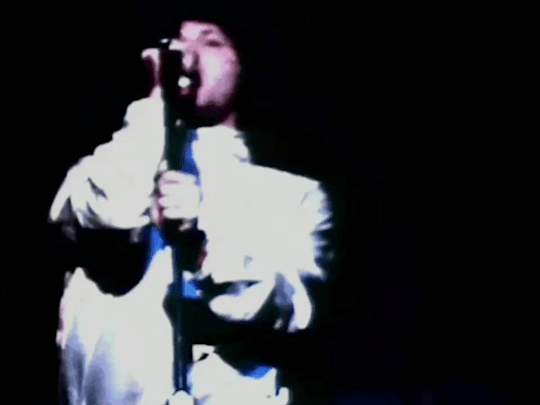

1 note
·
View note
Text
10 most popular final girls in horror movies

Here are the 10 most popular final girls in horror movies, according to various sources:
Laurie Strode (Halloween)
Sidney Prescott (Scream)
Ellen Ripley (Alien)
Nancy Thompson (A Nightmare on Elm Street)
Kirsty Cotton (Hellraiser)
Alice Hardy (Friday the 13th)
Jess Bradford (Black Christmas)
Sally Hardesty (The Texas Chain Saw Massacre)
Marybeth Dunstan (Hatchet)
Erin Hardesty (The Texas Chainsaw Massacre)
It's worth noting that different sources may have different rankings and include different characters. However, these 10 final girls are generally considered to be among the most iconic and memorable in horror movie history.
Unique Backstory
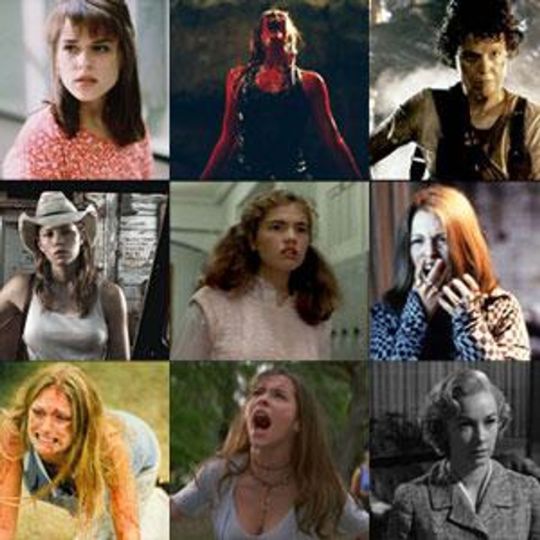
It's difficult to determine which final girl has the most unique backstory, as many of them have interesting and complex backgrounds. However, here are a few final girls with unique backstories:
Sidney Prescott (Scream) - Sidney's mother was brutally murdered when she was a teenager, and she has been targeted by various killers throughout the Scream franchise due to her connection to the original murders.
Kirsty Cotton (Hellraiser) - Kirsty is the daughter of a man who becomes obsessed with a mysterious puzzle box that unleashes demonic creatures. She must navigate the dangerous world of the Cenobites and their leader, Pinhead, in order to survive.
Alice Hardy (Friday the 13th) - Alice is a counselor at Camp Crystal Lake who becomes the sole survivor of a massacre committed by the vengeful mother of a drowned boy. She must use her wits and resourcefulness to outsmart the killer and stay alive.
Erin Hardesty (The Texas Chainsaw Massacre) - Erin is a college student on a road trip with her friends when they stumble upon a family of cannibals. She must fight for survival against Leatherface and his twisted relatives.
While these final girls all have unique backstories, it's worth noting that many other final girls also have interesting and compelling histories that contribute to their character development and overall impact on the horror genre.
1 note
·
View note
Photo

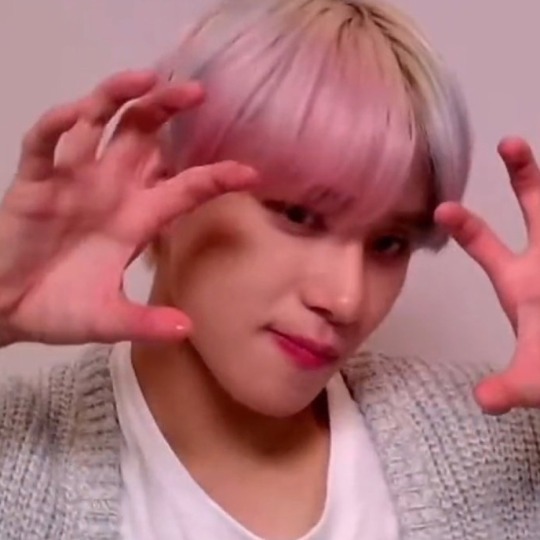





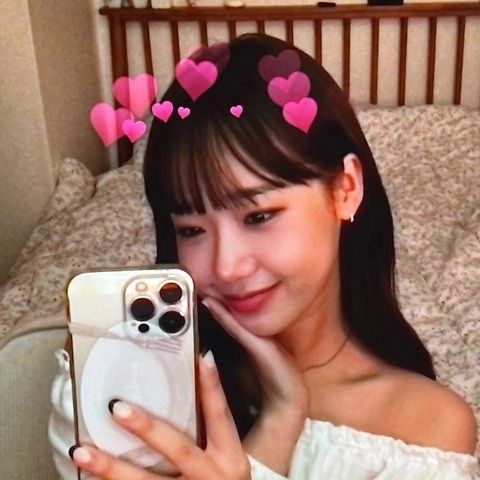
#sana#twice#do-a#bella#elris#alice#selina kyle#catwoman#batman#dc comics#spider-man#felicia hardy#marvel comics#jungwoo#nct 127#ningning#aespa#yoojung#weki meki#icons#headers#layouts#kpop#ggs#bgs#lq
64 notes
·
View notes
Text
Influential Directors of the Silent Film Era
Upon hearing that I am a fan of silent era film, people will ask if I have a favorite actor or movie from the time period. However, when I am asked about my favorites from other fans of silent film, it tends to involve my favorite director. This is because silent film actors had to over gesticulate and performed in an unrealistic way and could not use their tone or words to convey emotion. The directors also did not have a way to review as they shot and would have to use editing skills and strategic cover shots to make sure that everything was done properly and come out the way they imagined it. It was up to the director to be creative and they were forced to be innovative and create ways to convey their vision. Luckily for many average or poor directors of the time, audiences were easily impressed. However, today's more demanding and sophisticated audiences can look back at some of the genius behind the films of silent era Hollywood.
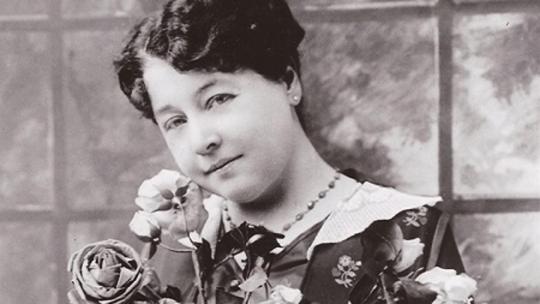
Alice Guy-Blache: Matrimony's Speed Limit (1913) and The Fairy of the Cabbages (1896)
Art director of the film studio The Solax Company, the largest pre-Hollywood movie studio, and camera operator for the France based Gaumont Studio headed up by Louis Lemiere, this woman was a director before any kind of gender expectations were even established. She was a pioneer of the use of audio recordings in conjunction with images and the first filmmaker to systematically develop narrative filming. Guy-Blanche didn't just record an image but used editing and juxtaposition to reveal a story behind the moving pictures. In 1914, when Hollywood studios hired almost exclusively upper class white men as directors, she famously said that there was nothing involved in the staging of a movie that a woman could not do just as easily as a man.

Charlie Chaplin: The Kid (1921), The Gold Rush (1923), City Lights (1931), Modern Times (1936), and The Great Dictator (1940)
It is unfortunate that many people today think of Chaplin as silly or for screwball comedy when, in fact, he was a great satirist of the time. He created his comedy through the eyes of the lower economic class that suffered indignities over which they had no control. He traversed the world as his "Tramp" character who found his fortune by being amiable and lucky. The idea that a good attitude and a turn of luck could result in happiness was all that many Americans had during the World Wars and the Great Depression. He played the part of the sad clown and he was eventually kicked out of the country for poking fun at American society. Today he is beloved for his work, but he was more infamous than famous during a large part of his life.
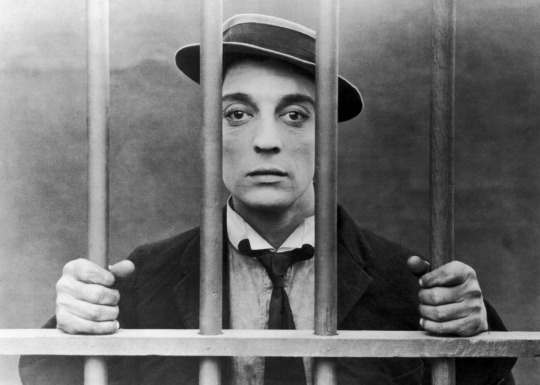
Buster Keaton: Sherlock Jr. (1924), The General (1926), and The Cameraman (1928).
That man that performed the most dangerous of stunts with a deadpan expression, Buster Keaton was a great actor, athlete, stuntman, writer, producer, and director. It is amazing that you could get so much emotion out of a silent actor who does not emote, but Keaton managed to do it. He was also never afraid to go big, often putting his own well being at risk to capture a good shot. Not as well known for his cinematography or editing as many of the other directors of the time, he instead captured performances that were amazing no matter how they were filmed. Famous stunts include the side of a house falling down around him, standing on the front of a moving train, sitting on the side rail of a moving train, and grabbing on to a speeding car with one hand to hitch a ride. If you like films by Jackie Chan, know that he models his films after the work of Buster Keaton: high action and high comedy.

Cecil B. Demille: The Cheat (1915), Male and Female (1919), and The Ten Commandments (1923)
Known as the father of the Hollywood motion picture industry, Demille was the first director to make a real box office hit. He is likely best known for making The Ten Commandments in 1923 and then remaking it again in 1956. If not that, he was also known for his scandalous dramas that depicted women in the nude. This was pre-Code silent film so the rules about what could be shown had not been established. Demille made 30 large production successful films in the silent era and was the most famous director of the time which gave him a lot of freedom. His trademarks were Roman orgies, battles with large wild animals, and large bath scenes. His films are not what most modern film watchers think of when they are considering silent films. That famous quote from the movie Sunset Boulevard in 1950 in which the fading silent actress says "All right, Mr. Demille. I'm ready for my close-up," is referring to this director.

D.W. Griffith: Birth of a Nation (1915) and Intolerance (1916)
Griffith started making films in 1908 and put out just about everything that he recorded. He made 482 films between 1908 and 1914, although most of these were shorts. His most famous film today is absolutely Birth of a Nation and it is one of the most outlandishly racist films of the time. The depiction of black Americans as evil and the Klu Klux Klan as heroes who are protecting the nation didn't even really go over well at that time. Some believe that his follow up the next year called Intolerance was an apology, but the film actually addresses religious and class intolerance and avoids the topic of racism. At the time, Griffith films were known for the massive sets and casts of thousands of extras, but today he is known for his racist social commentary.

Sergei Eisenstein: Battleship Potemkin (1925)
This eccentric Russian director was a pioneer of film theory and the use of montage to show the passage of time. His reputation at the time would probably be similar to Tim Burton or maybe David Lynch. He had a very specific strange style that made his films different from any others. The film Battleship Potemkin is considered to be one of the best movies of all time as rated by Sight and Sound, and generally considered as a great experimental film that found fame in Hollywood as well as Russia.
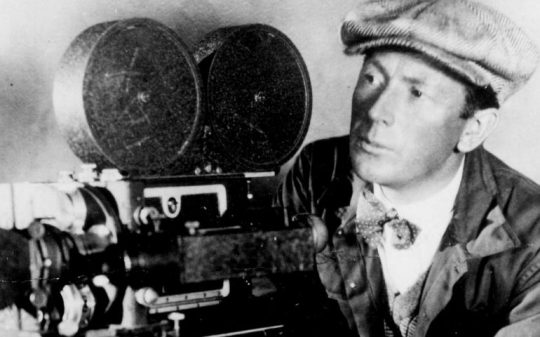
F.W. Murnau: Nosferatu (1922), Faust (1926), and Sunrise: A Song of Two Humans (1927)
I think that most people would know the bald-headed long-nailed vampire Nosferatu that was a silent era phenomena. It was so iconic that the German film studio that produced the movie was sued by the estate of Bram Stoker and had to close. Faust was his last big budget German film and has an iconic shot of the demon Mephisto raining plague down on a town that was the inspiration for the Demon Mountain in Fantasia (1940). Also, Sunrise is considered one of the best movies of all time by the AFI and by Sight and Sound as well as my favorite silent film. Fun facts: 1) more of Murnau's films have been lost then are still watchable and 2) he died in a car wreck at only 40 when he hired a car to drive up the California coast and the driver was only 14.
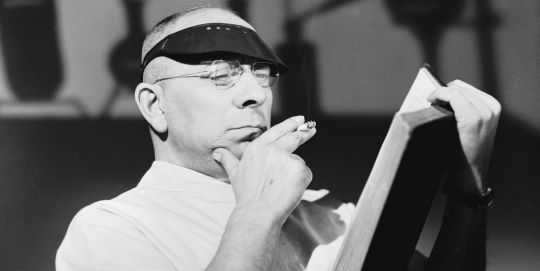
Erich von Stroheim: Greed (1924)
Maker of very strange German Expressionist films, Stroheim films are often listed as Horror or Mystery even though he considered himself a dramatic film maker. His most famous movie Greed was supposed to be amazing with an 8 hour run time but it was cut drastically to the point that it makes no sense and was both critically and publicly panned when an extremely abridged version was released in the U.S. Over half the film was lost and a complete version no longer exists. Besides this film, Stroheim was even better known for being the butler in the film Sunset Boulevard as a former director who retired to be with an aging silent film star. He also made a movie called Between Two Women (1937) that told the story of a female burn victim that was inspired by the story of his wife being burned in an explosion in a shop on the actual Sunset Boulevard.
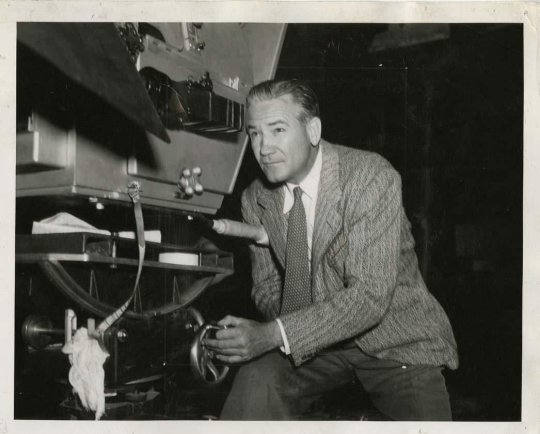
Victor Fleming: The Wizard of Oz (1939) and Gone With the Wind (1939)
Although not known for his silent films, Fleming did get his start during the silent era. He was a cinematographer for D.W. Griffith and then Fleming directed his first film in 1919. Most of his silent films were swashbuckling action movies with Douglas Fairbanks or formulaic westerns. He is the only director to have two films on the AFI top 10 and they happened to have come out the same year.
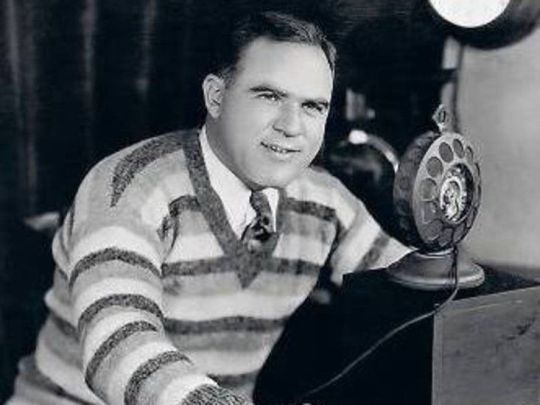
Hal Roach: Lonesome Luke films starring Harold Lloyd, Our Gang shorts, Laurel and Hardy shorts, and Of Mice and Men (1939)
It is not really fair to put Hal Roach in the silent era directors because he was influential at the time but he had a 75 year career. He was a producer and film studio head and even had a studio named after himself. His biggest contribution to the silent era was his production of Harold Lloyd short comedies and he continued to produce films in the early talkies including Laurel and Hardy shorts, Our Gang shorts, and Wil Rogers films. Roach was the inspiration for the film Sullivan's Travels, in which a famous director who only did frivolous comedies goes out into the world to find inspiration to find a serious drama. Roach did direct a single serious drama, Of Mice and Men, but it came out in 1939 and was buried underneath the works of Victor Fleming. The wealthy cigar smoking studio head that many people think of when they picture a film studio suit is based on this guy. The man would not quit and stayed in the business into his 90s and lived to the ripe old age of 100.
21 notes
·
View notes
Photo
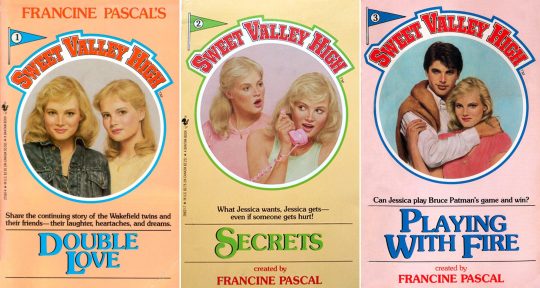
Some Books I Read as a Kid and Their Evolving Styles
Since the book cover I am designing is primarily aimed at kids, I thought I should look at some of the books I read as a child. I have to admit, I have never been a big reader, most of the books I read were influenced by what my sister read as a kid too. However every now and then I will be engrossed by a novel, it just is quite rare.
One big one was The Sweet Valley books, a long running series of books that followed the lives of identical twin sisters Jessica and Elizabeth, spanning from their young life to university age. I always loved the illustrated covers and pastel tones of the 80′s versions. The covers were painted by James Mathewuse, a book cover artist known for his work on the Nancy Drew and Hardy Boys series.
The covers themselves went through many changes from the 80′s - 2000′s, reflecting the changing times. Below shows the evolution of one of the novels.
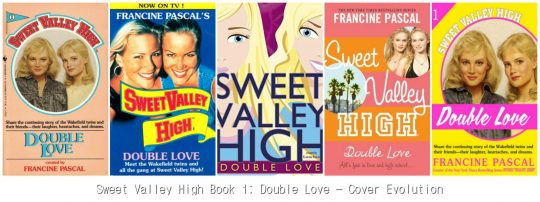
There was also the infamous Judy Blume books. I recall reading ‘Are you there God, it’s me Margaret’ (which recently turned 50 years old!) as a kid. Below is a variety of variations of its book cover. What I find interesting looking at both the Sweet Valley books and Judy Blume, is the noticeable move from illustrative designs to real life model photography use in the 2000′s, and a more prominent use of the authors name.
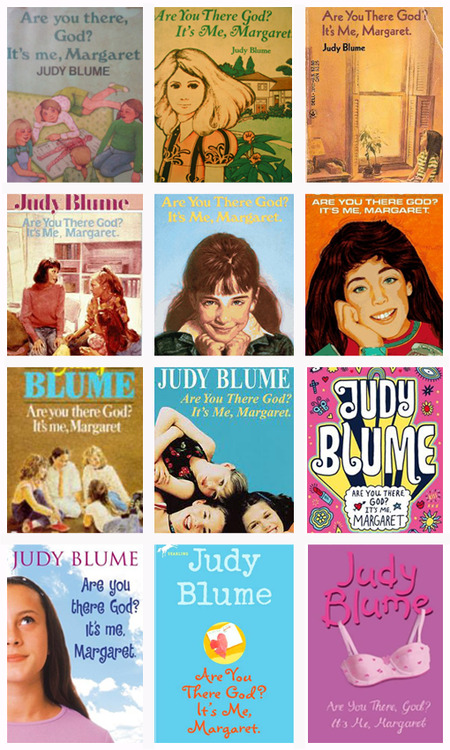
A book I have always had a love for is the classic, Alice in Wonderland. I have several versions of it as I adore collecting the variations of book covers and flicking through to look at the illustrations. There have been 100′s of cover designs created for Alice since its first publishing. In fact, you can learn a lot about the evolution of book cover design purely from just looking at one book throughout the years. Alice goes through many changes, from her fashion and appearance to being omitted altogether and replaced by floral patterns. The typography used goes from elaborate gold foil script use to bold 70′s serif use. We even see other popular children’s author, Tove Jansson (author of the Moomin books) create a very recognisable cover design in her iconic style.
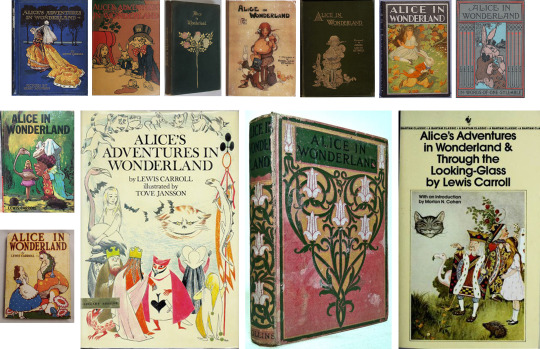
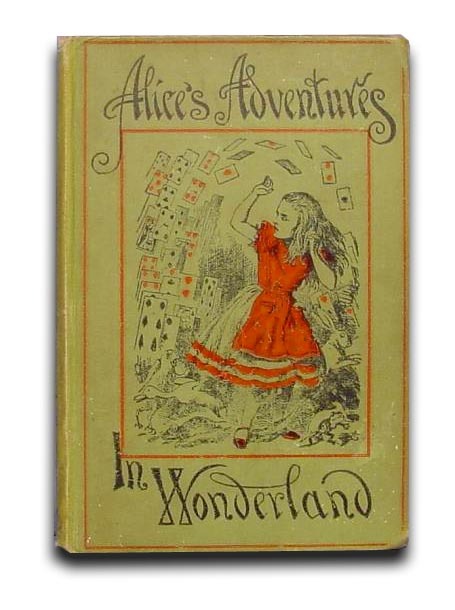
Above: the original 1898 Alice in Wonderland Book Cover, which featured a beautiful and illustrative font.
References
sites.utexas.edu. (n.d.). Thoroughly Modern Alice: Incarnations of Lewis Carroll’s heroine through the years. [online] Available at: https://sites.utexas.edu/ransomcentermagazine/2015/03/17/carrolls-heroine-through-the-years/ [Accessed 16 Feb. 2021].
#pbc_hncgd1#alice in wonderland#childrens book#graphic design#book cover design#children's classics#sweet valley high
36 notes
·
View notes
Text

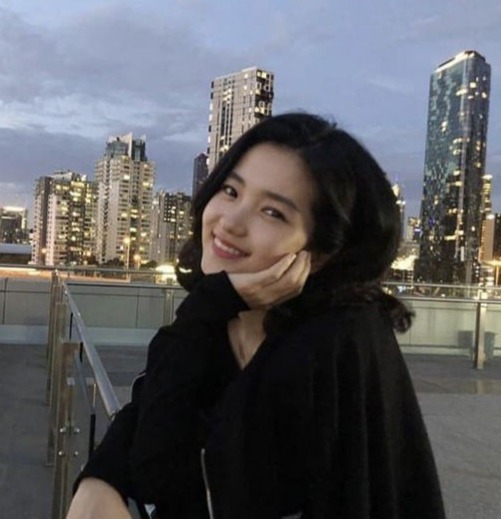

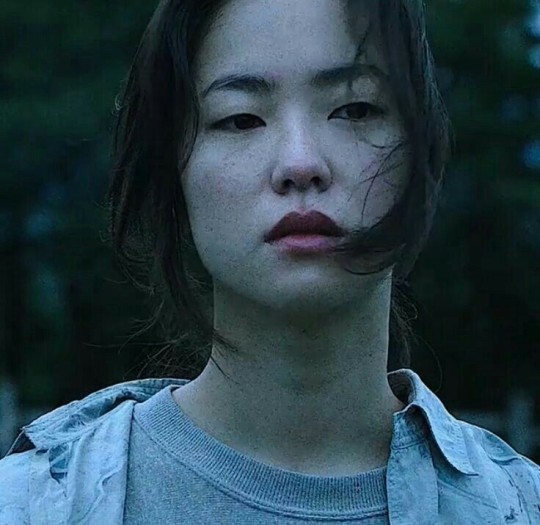


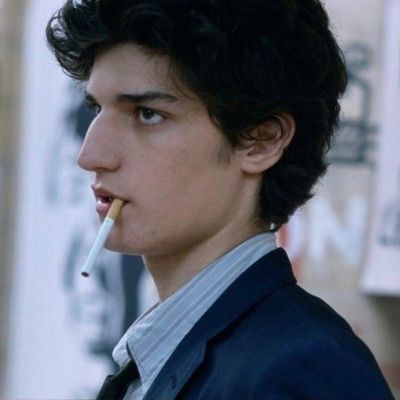
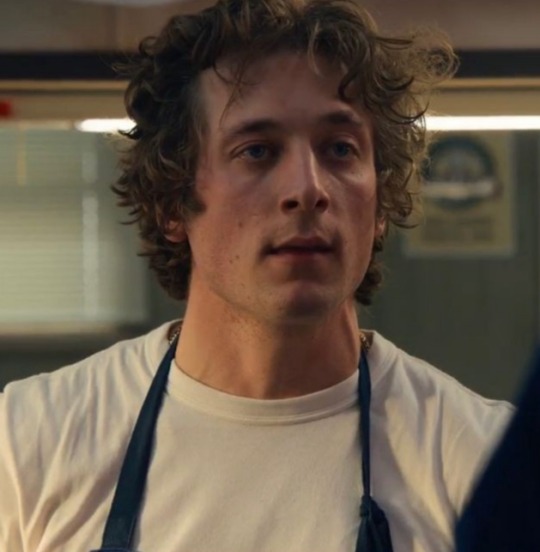

#tom hardy#tom hardy icons#tom hardy aesthetic#kim tae ri#kim tae ri icons#kim tae ri aesthetic#alice pagani#alice pagani icons#alice pagani aesthetic#louis garrel#louis garrel icons#louis garrel aesthetic#ro woon#ro woon icons#ro woon aesthetic#jeon yeo been#jeon yeo been icons#jeon yeo been aesthetic#jhope#jhope icons#jhope aesthetic#lee dong wook#lee dong wook icons#lee dong wook aesthetic#jeremy allen white#jeremy allen white icons#jeremy allen white aesthetic#icons#aesthetic#aesthetic blue icons
31 notes
·
View notes
Note
Do you think it was a misstep for p2 to kill Alice Hardy off so early in the series/the movie?
Alice was a great final girl but I don’t think she was nearly as iconic as Laurie, Nancy, Sid, etc... personally, I prefer Ginny over her, so I didn’t really mind her getting killed. To me, it was a cool way to let the audience know that this movie aint messin around.
I guess I’d have to see a hypothetical part 2 script with Alice to determine if it would be better than part 2 or not lol, but I quite like p2 so it’d take some competition
3 notes
·
View notes
Note
What kind of projects do you think JA should choose in the future? Superhero one is something I feel he has been wanting to do for years even before avengers (i think) So that's kind of been checked off the list.
Just killing time asking u (⊙o⊙)
My answer has changed quite a bit over the years tbh, I once used to be into the idea of Jensen playing a superhero along with a lot of Jensen standom - although I preferred the idea of him doing something a bit more edgy like a Deadpool sequel (he was very almost Ajax in the first film) or character-driven like Jessica Jones or Luke Cage, so you can imagine how happy I am that he’s doing something similar like The Boys. The Boys has an excellent cast - and that’s really important to me, who he works with, because as great as I think Jensen is, there’s always room for him to improve and move up to the next level. Jensen having good actors and directors around him will help, and I am really looking forward to him working opposite the likes of Antony Starr and Giancarlo Esposito.
Other than that, there’s plenty of things I’d love Jensen to do - I’d love him to do more psychological horror, which has been toyed with on Supernatural but never really explored. Something really well-written and directed with high calibre actors. Jensen has proven himself to be incredibly good in the sort of role where his character is either being gaslit or doesn’t quite trust the world he’s in, a sort of Alice in Wonderland...we’ve seen him in episodes like WIAWSNB and pretty much the first half of s6, and it really suits him.
I’d also love him to work with real creative directors, I doubt there’ll be another season of Sharp Objects but I would be in heaven if Jensen got to work with it’s cast and crew, Amy Adams is one of my favourite actors and I like Jean-Marc Vallée’s style of directing, both in Sharp Objects and Big Little Lies.
Sidenote: I just looked up Sharp Objects and found out that its creator Marti Noxon wrote and produced Still Life, which was Jensen’s show on Fox that never got picked up so they already have a connection!! :)))
I’d also love for Jensen to work with Gillian Anderson, that is a dream of mine as well as Tom Hardy and Cillian Murphy, in fact, I’d love for Jensen to come over to the UK and feature in Peaky Blinders, or any tv show in the UK to be honest. It would be worth it just to see Jensen fanboy all the time behind the scenes and in interviews.
Gillian Anderson is actually imo the gold standard in what to do after starring in a cult tv show for several years, and I really would like Jensen to follow suit. Back in the day, everyone thought David Duchovny would be the bigger star of the two once The X Files finished, and he immediately went for the big-budget starring roles. Gillian, on the other hand, took the lower budget, smaller and more interesting roles, building up a solid reputation as a respected character actress. While David Duchovny is not exactly in career hell, he never really took off as people expected, starring in just two tv shows, the last of which ended 5 years ago, and reprising his role as Mulder for an X Files reboot. Meanwhile, Gillian’s career grew and grew, both here in the UK as well as in the US, where she’s worked in numerous acclaimed tv and film productions, getting good reviews and after a while, she began to get starring roles in her own right, again in quality films, television shows and to award-winning acclaim on stage.
She’s now an icon, with her own acclaimed tv show currently on Netflix and is has a huge role in the latest season of The Crown, and her career has been incredibly varied (her IMDB list is vast) and no doubt incredibly rewarding for her. She played the long game, and it worked, and that’s exactly what I hope Jensen will do himself...which is why I pay no attention to the haters who are crowing that Jensen only has a supporting role in The Boys, because it’s just the beginning and Jensen is smart.
So far it looks like Jensen is going to be as savvy as Gillian Anderson, going for quality over quantity, which really pleases me, and I can’t wait to see where his career will go.
#replies#jensen ackles#jensen acting appreciation#jensen ackles and gillian anderson is my dream team#optimistically-cynical
15 notes
·
View notes